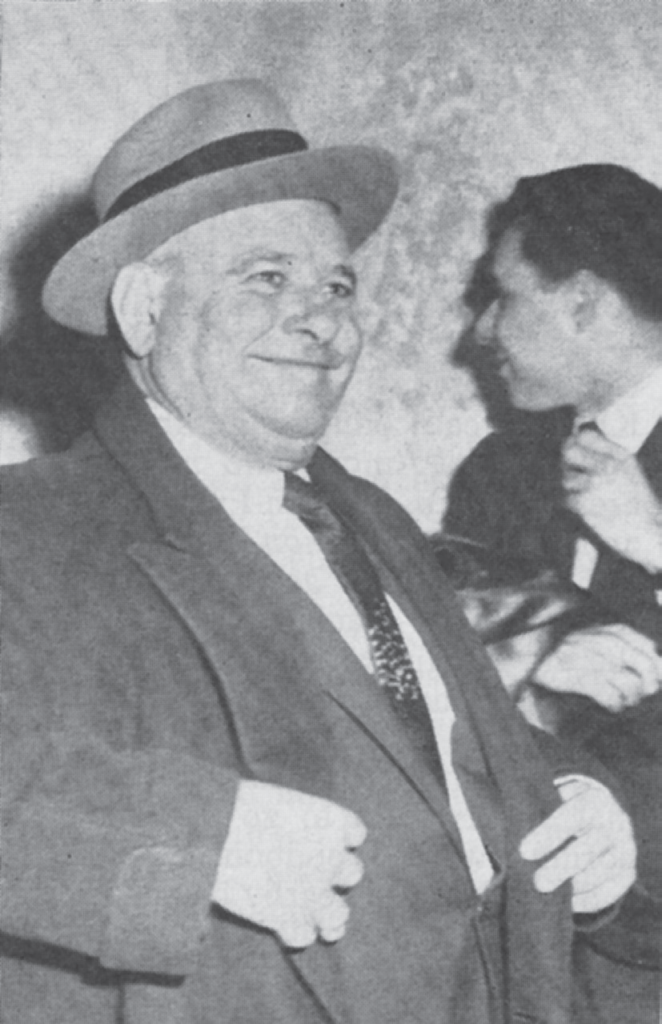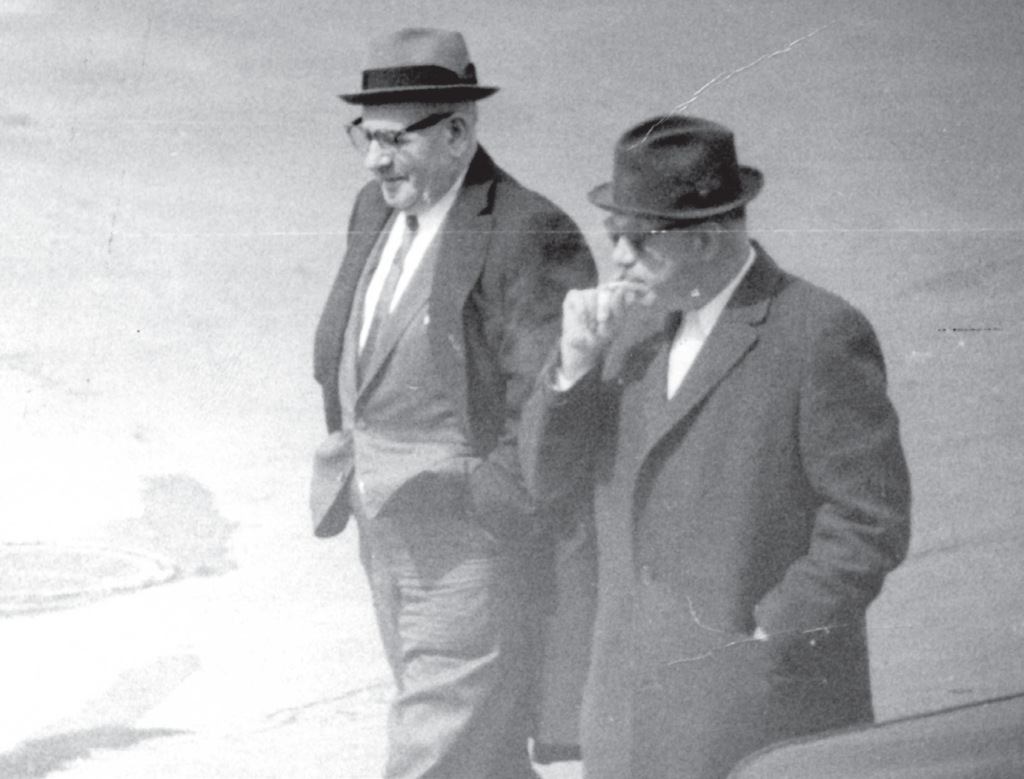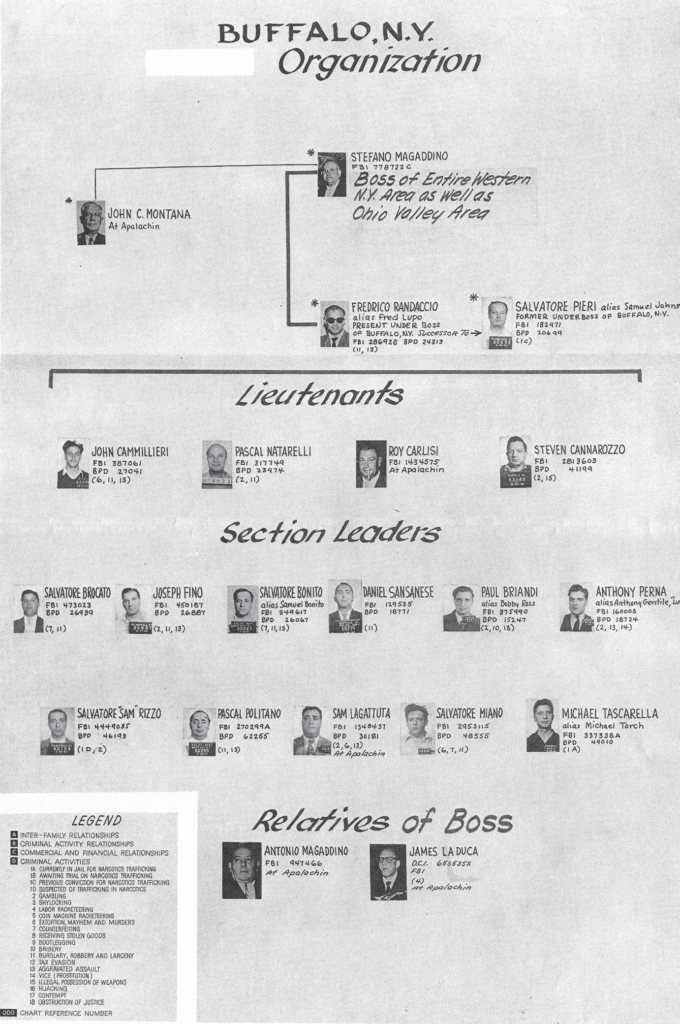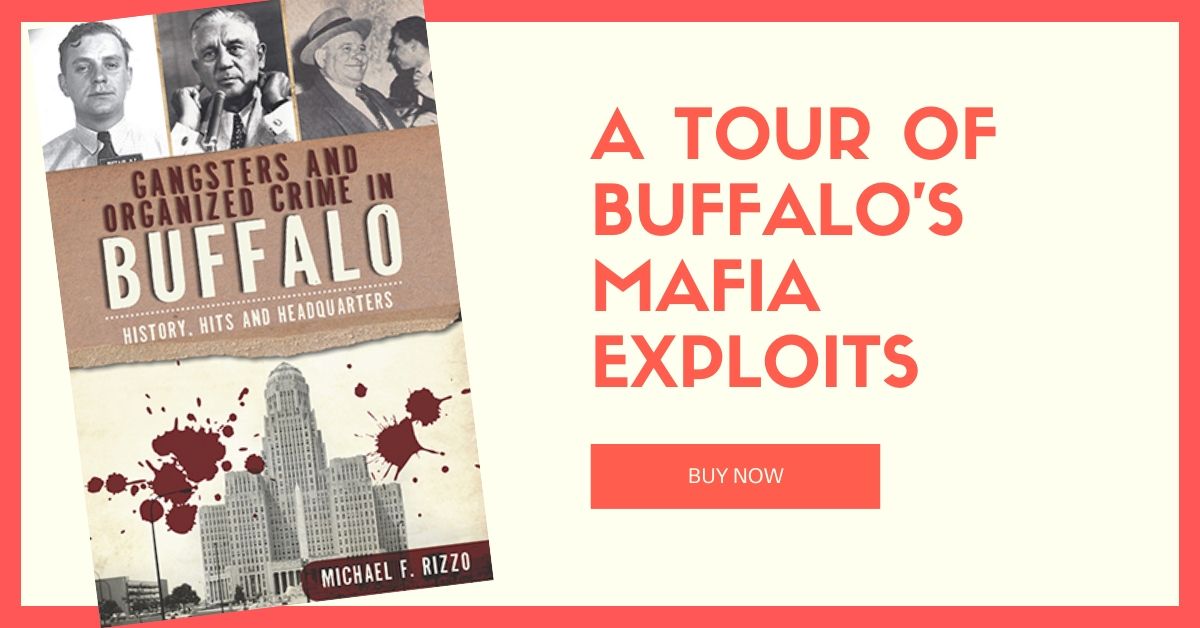
When we think of New York gangsters, certain names always come to mind—Jimmy Hoffa, ‘Lucky’ Luciano, Jon Gotti. Immortalized in films, storied in urban legends, awed by cops and criminals alike—these founding godfathers of the city have earned their reputation throughout time.
But they’re not the only ones to have lied, cheated, stolen, and murdered their way to the top—what about all the other families out there, as we’ve looked at before. In New York, what happens when ‘business’ extends past the five boroughs and into the rest of the state?

In his book Gangsters and Organized Crime in Buffalo: History, Hits and Headquarters, author Michael F. Rizzo chronicles in-depth the shadowy stories of mobsters in the City of Light. One of the best-known in the area was the Sicilian-born Magaddino clan, who engaged in racketeering, rum-running, jewelry store and bank heists, the works—all headed by local boss Stefano Magaddino, who presided over the family from 1922 until his death in 1974.

You don’t run a criminal enterprise for over fifty years without getting into a few scrapes—not least of which with your own famiglia. So when Rizzo learned that Brooklyn mob boss Joseph Bonanno, Magaddino’s cousin, disappeared in October 1964 on the eve of testifying before a grand jury, the question naturally arose: what happened?
According to Rizzo, Magaddino had always suffered from a little healthy paranoia in his role as capo, but by the early 1960s it had grown to significant levels. Magaddino was convinced that his cousin Joe, now a powerful boss in his own right, was working with allied families in Montreal to undermine him—or worse, serving as a spy for the police. Regardless of whether this was the case, one thing is true: Bonanno was scheduled to testify before a grand jury on October 21, 1964. One other thing is true, too: that after having dinner with his lawyer the night before, he never showed up for his testimony.

So what happened? Il dipende, amico mio: Bonanno himself said that later that night two men forced him into a taxi at gunpoint, then drove for hours deep into the countryside until they reached a farmhouse. There he was held captive by Magaddino and his men, released only after several weeks. Another story says that can’t be true, given that the Magaddinos were under FBI surveillance the whole time, and they couldn’t have moved an inch without the feds knowing. A third story from Bonanno’s son says the rendezvous was more of a ‘respite,’ with Bonanno simply taking a little time off to enjoy the hospitality of his cousin.
Yeah, right.
And Rizzo? Based on his research, he came to a different conclusion altogether. Most historians, he writes, “seem to agree that Bonanno staged the whole kidnapping to avoid testifying before the grand jury and appearing before the Mafia Commission, and blamed his cousin.”
We’ll never know for sure, as Bonanno died in 2002 at the ripe old age of 97, having outlived nearly all of his fratelli e sorelle, and Magaddino himself by nearly four decades. But while Crime Capsule in no way endorses his methods, you still gotta hand it to him—facing hot water no matter which way he turned, Bonanno decided to kidnap himself and solve the problem his own way. Bravo!





